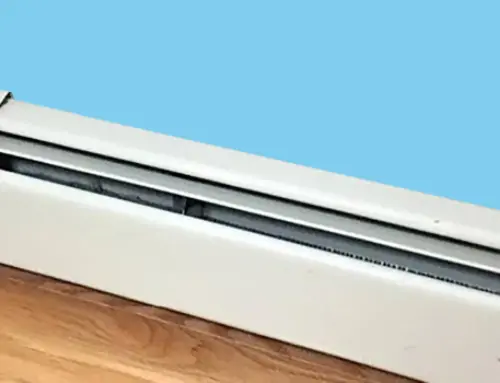Gas vs Electric Dryer: Cost, Efficiency & What’s Best for Your Home
by Tyler Castle
23.8 min read

If you're shopping for a new clothes dryer—or upgrading an old one—you've probably found yourself debating between gas and electric models. While both options get the job done, the right choice can depend on more than just price tags and power plugs.
For homeowners in the Midwest, things like utility access, climate, and energy costs all come into play. That's why it's important to understand how each type of dryer works, how much they cost to run, and which fits best with your home and energy plan. As gas and electricity experts with over 35 years of experience with both commodities, you can trust us. Let's break down the differences so we can help you make the smartest choice for your home, your budget, and your lifestyle.
Key Points of This Article:
- Gas dryers use natural gas or propane to generate heat and require a gas hookup and a standard 110-volt outlet.
- Electric dryers rely entirely on electricity, requiring a 240-volt outlet, and use electric heating coils.
- Gas dryers typically offer faster drying times and are more energy-efficient in the long run, especially in regions where natural gas is cheaper
- Electric dryers are easier to install and maintain, with fewer safety risks compared to gas dryers.
- The choice between gas and electric dryers depends on factors like existing utility hookups, installation costs, energy rates, and personal preferences.
What Are the Differences: Gas vs Electric Dryer
When it comes to choosing between a gas vs electric dryer, the differences go far beyond the type of plug or price. From how they generate heat to installation requirements and long-term energy use, each type of dryer has distinct characteristics that impact your daily convenience, your utility bill, and your overall home efficiency.
Differences of Gas Dryers
- Gas dryers use natural gas or propane to fuel a burner that produces heat, which allows them to dry clothes more quickly thanks to higher heat levels.
- While gas dryers create heat using natural gas or propane, they still need a bit of electricity to run components like the drum, fan, lights, and control panel.
- Gas dryers require a standard 110-volt outlet plus a gas hookup for installation.
- They're often more energy-efficient over time, especially for households that do laundry frequently. This is because natural gas is typically less expensive than electricity in many regions of the U.S.
- Gas dryers usually cost more upfront and require professional installation.
- Because they involve gas components, these dryers may need more ongoing maintenance and careful use to prevent issues like gas leaks.
Differences of Electric Dryers
- Electric dryers rely entirely on electricity to generate heat, power the drum, power the control panel and more. They require a 240-volt outlet—the standard for large appliances.
- Electric dryers produce heat through electric heating coils and are typically slower to dry clothes compared to gas models.
- While they're often more affordable to buy and easier to install, they may cost more to operate in the long run, especially if electricity rates are high in your area.
- Maintenance is generally simpler and less expensive, and there's no risk of gas leaks. Still, keeping the lint trap and vent system clean as well as preventing overheating is essential for safety and performance.
We've found that approximately 80% of U.S. households have electric dryers, primarily due to ease of installation and availability of power sources. However, gas dryers, while less common, can be more energy-efficient in the long run if natural gas is readily available in your area.
Ultimately, which model you choose entirely depends on your preferences and lifestyle. Keep reading for what else you should know before making your decision!

How Do Gas Dryers Work?
In a gas dryer, heat is produced by burning natural gas or propane inside a combustion chamber. The hot air created is then blown into the drum using a fan, where it circulates around your clothes as they tumble. As moisture is pulled from the fabric, it gets vented outside through an exhaust duct.
How Do Electric Dryers Work?
Electric dryers create heat using resistive electric heating coils—think of how an electric oven warms up. A fan draws in room air, pushes it over hot coils, and sends it into the drum where your clothes are spinning. The warm, moist air is then vented outside—or if you have a ventless model, the moisture is condensed and collected instead.
Gas or Electric Dryer: Pros and Cons
Still stuck on which model to choose? As experts in the gas and electricity space, here's what's important to know about the pros and cons of each model:
Drying Performance
In our experience, we've found that gas dryers typically offer faster drying times than electric models because they produce heat more quickly and at higher temperatures. Gas dryers are particularly efficient for large households or during cold Midwest winters when indoor drying takes longer.
Their powerful heat output can lead to shorter cycles, which can reduce overall wear on clothing and might save you money in the long run.
Electric dryers, by contrast, tend to have slower heat-up times, which can lead to longer drying cycles. That said, modern electric dryers are equipped with moisture sensors and energy-saving features which can improve performance.
While they may not dry as quickly as gas models, they still provide consistent results, especially in smaller households or homes with moderate laundry demands. Plus, some ventless electric models offer flexibility for apartments or tight spaces where exterior venting isn't an option.
In our expert-backed opinion, we believe that gas dryers win over electric dryers simply from a drying performance standpoint but if you're crunched for space, you'll most likely have to choose an electric dryer and sacrifice a higher drying performance.
Energy Efficiency
When comparing per-load efficiency, gas dryers often come out ahead. They heat faster and dry clothes more quickly, which reduces the amount of energy used per cycle. This can be especially cost-effective in regions where natural gas rates are lower than electricity, like in parts of Illinois, Ohio, and Pennsylvania.
However, keep in mind that gas dryers do still require a small amount of electricity to power the drum and controls, which might hinder its overall efficiency.
Electric dryers, on the other hand, may use more electricity per load due to longer drying times than that of a gas dryer. However, their efficiency is improving. Many ENERGY STAR®-certified electric models now come with advanced features like moisture sensors and low-heat settings that reduce energy use.
Installation and Safety
Gas dryers have more complex installation requirements. They need both a standard 110-volt electrical outlet and a nearby gas line, which must be installed or inspected by a licensed professional.
This can definitely increase the upfront cost and may require permits or special venting solutions. In addition to this, gas dryers require regular checks for leaks and proper venting of combustion. This helps to avoid safety hazards like carbon monoxide buildup or even gas leaks that can lead to explosions if left unchecked.
Electric dryers are much simpler to install, usually requiring only a 240-volt outlet to function. Obviously, electric dryers don't need gas access, which makes them ideal for homes that rely solely on electricity.
The safety risks of an electric dryer are minimal compared to gas models, and electric dryers don't require the same level of ventilation. This makes them a more convenient and affordable choice for renters, first-time buyers, or anyone looking to avoid the complexities of gas installation.
When it comes to safety and ease of installation, electric dryers win over gas dryers.
Maintenance and Operating Costs
From a maintenance perspective, both gas and electric dryers require similar upkeep—like cleaning the lint trap after every use and regularly clearing out the vent to prevent fire hazards. However, gas dryers tend to have slightly lower operating costs in areas where natural gas is inexpensive and since electricity is historically more expensive than natural gas.

Are Gas Dryers Better Than Electric?
It depends on what's most important for your home and lifestyle.
In terms of performance, gas dryers are better than electric dryers because they heat up faster and dry clothes more quickly. That means your laundry gets done sooner, which is great for big families or anyone doing lots of loads—especially in cold Midwest winters.
They're also usually cheaper to run over time if natural gas is less expensive in your area. But they do need a gas line, a special vent, and professional installation, which can make them more complicated and costly to set up at first.
In the end, the model you should choose really depends on your lifestyle and situation. But if it were up to us based on these pros and cons alone, if you have an existing gas line, we'd recommend going with a gas dryer vs an electric dryer.
Overall, the drying performance of a gas dryer is faster and more efficient than that of an electric dryer and that's what is most important to homeowners. Coupled with the less expensive natural gas, it's a win-win situation. You'll just have to pay attention to ventilation and clear those lint traps after every cycle for ultimate safety.
Cost of Running a Gas vs. Electric Dryer: Which Is Cheaper to Run?
If you're shopping for a new dryer, the cost can be one of the biggest things to consider. But it's not just about the price tag at the store—there's also installation, maintenance, and how much it costs to use over time.
Gas dryers usually cost more up front. A basic gas dryer can start around $300, while high-end models can go up to $2,300. On top of that, installation costs typically range from $1,099 to $2,362, especially if you need a gas line or professional setup.
Electric dryers are usually more affordable. You can find basic models starting at $160, and high-end versions can reach up to $2,100. Installation is also cheaper and simpler, costing around $997 to $2,042.
So, if you're strictly looking for an easier and more budget-friendly option when it comes to initial installment, we recommend electric dryers are the better choice. But if your home already has a gas hookup, investing in a gas dryer could save you money over time, since they're usually cheaper to run.
When talking about the long-term operating costs of a gas vs electric dryer, our recommendations are different. To put this into perspective, we put our energy experts to work. They've calculated the numbers of the estimated long-term cost of operating a gas and electric dryer based on the most recent data and rates from the U.S. Energy Information Administration:
Average Daily, Weekly, Monthly, and Yearly Cost of Using an Electric Dryer at 3.4 kWh per Standard Cycle for 1 Hour and 8 Minutes
| State | Electricity Rate (¢/kWh) | Daily | Weekly | Monthly | Yearly |
| OH | 16.12 | $ 0.62 | $ 4.35 | $ 18.63 | $ 226.72 |
| PA | 18.43 | $ 0.71 | $ 4.97 | $ 21.31 | $ 259.21 |
| IL | 17.59 | $ 0.68 | $ 4.74 | $ 20.33 | $ 247.40 |
| MI | 19.37 | $ 0.75 | $ 5.22 | $ 22.39 | $ 272.43 |
| IN | 16.52 | $ 0.64 | $ 4.46 | $ 19.1 | $ 232.35 |
*Based on Electricity Rates in the Midwest U.S. as of March 2025.
Average Daily, Weekly, Monthly, and Yearly Cost of Using a Gas Dryer on a Standard Cycle for 1 Hour and 8 Minutes*
| State | Gas Rate ($/MCF) | Daily | Weekly | Monthly | Yearly |
| OH | 11.57 | $ 0.29 | $ 2.02 | $ 8.65 | $ 105.29 |
| PA | 15.25 | $ 0.38 | $ 2.66 | $ 11.41 | $ 138.79 |
| IL | 10.93 | $ 0.27 | $ 1.91 | $ 8.18 | $ 99.47 |
| MI | 11.02 | $ 0.27 | $ 1.92 | $ 8.24 | $ 100.29 |
| IN | 11.52 | $ 0.29 | $ 2.01 | $ 8.62 | $ 104.84 |
*Based on Natural Gas Rates in the Midwest U.S. as of March 2025 at the standard of 22,000 BTUs (at 0.022 MCFs per hour).
So, which is cheaper? Based on the data we've compiled above, just in terms of operation cost, gas dryers are 58–62% cheaper than electric dryers. However, it is important to note, like we've said, electric dryers are typically cheaper to buy and easier to install. Gas dryers cost more upfront, but they're much cheaper to run daily—especially if you do laundry often.
If you're looking to save money in the long term and already have an existing gas hookup, we advise you to choose a gas dryer for your home.
What Dryer Type Works Best for Your Midwest Home?
Choosing the right dryer isn't just about efficiency or cost—it's also about how your home is built and what utilities you have access to. To make your decision easier, we've created a few example household scenarios and shared our recommendations for which type of dryer fits best. Here's how to find the right match for your home and lifestyle:
Single-Family Homes
If you live in a single-family home, you likely have the space and flexibility to choose between a gas or electric dryer—especially if your home has a basement or dedicated laundry room.
In many older Midwestern homes, a natural gas line is already installed in the laundry area, which makes a gas dryer a convenient and cost-effective option. However, the best choice often comes down to your existing utility setup and laundry habits.
But if you don't, it's usually more practical to go with an electric dryer—especially since many single-family households likely only run laundry one to two times a week. At that frequency, the lower upfront cost and ease of installation for an electric model may outweigh the long-term energy savings of gas.
Apartments and Condos
In apartments, condos, or rental units—especially in urban areas like Chicago, Cleveland, or Pittsburgh—electric dryers are usually the best (and often only) option. These homes often don't have gas lines in each unit, and building codes may restrict gas appliance use due to safety or ventilation concerns.
If you live in an apartment or condo, we recommend a ventless electric dryer (also called condensing dryers) for your space. These models are a popular solution in apartments where ductwork for external venting isn't available. They're compact, low-maintenance, and easy to install with just a standard 240V outlet.
Multi-Person Homes
If you live in a home with multiple people—such as a large family, a shared living situation with roommates, or a multi-generational household—you're likely doing more laundry on a regular basis. With multiple loads per week (or even per day), having a dryer that can handle frequent use efficiently becomes a must.
For this situation, gas dryers are often the better fit here because they heat up faster and dry clothes more quickly, which helps reduce total laundry time and energy use across many loads. Over time, this can lead to significant savings, especially if you're using a fixed-rate natural gas plan.
That said, electric dryers can still work well in multi-person homes—especially if paired with our Unlimited Energy plan or are equipped with moisture sensors to prevent over-drying and manage energy use more efficiently.
Should I Choose a Gas or Electric Dryer?
In the end, your choice should depend on your home setup and energy needs. But to help you out, here are our recommendations and what to consider when choosing between a gas vs electric dryer:
Choose a Gas Dryer If…
- You already have a gas line and prefer quicker drying times, especially if natural gas is readily available in your area.
- You're looking for shorter drying cycles and more energy savings per load.
- You plan to stay in your home long-term, so investing in a gas line could pay off with lower energy bills since gas dryers tend to be more efficient.
- You're aiming to keep your monthly energy costs low and want a dryer that's more affordable to run in the long term.
- Your laundry space only has a standard 120-volt outlet, which means a gas dryer is likely your best fit since electric dryers typically need a 240-volt outlet.
Choose an Electric Dryer If…
- You want something that's easy to set up, doesn't have a gas line, or needs a dryer that works with ventless options.
- You'd rather keep installation simple, don't have gas service, or like the idea of using electricity from renewable sources.
- Your laundry space is already wired with a 240-volt outlet, and there's no gas hookup available.
- You're not planning to stay in your home long-term, so adding a gas line probably isn't worth the upfront cost.
- You're shopping on a budget—electric dryers usually have a lower starting price than similar gas models.
Best Electric Clothes Dryers
Looking for a reliable electric dryer that delivers great performance and energy savings? Here are some of our recommended and well researched top-rated models that combine efficiency, smart features, and value—perfect for modern households:
LG DLEX8600BE 7.3 Cu. Ft. Smart Electric Dryer
The LG DLEX8600BE is an excellent choice for large households thanks to its spacious 7.3 cu. ft. capacity, which easily handles bulky bedding and big loads. It features advanced moisture-sensing technology to prevent over-drying, while its impressive suite of 24 drying programs and 20 additional options gives users unmatched flexibility.
With smart connectivity, AI-powered settings, and quiet operation, this dryer delivers both performance and convenience in a sleek, high-tech package.
LG DLEX4000B 7.4 Cu. Ft. Stackable Smart Electric Dryer
Designed for flexibility and performance, the LG DLEX4000B offers a roomy 7.4 cu. ft. capacity and can be stacked to save space—ideal for laundry rooms with limited floor space. It includes steam cycles and an AI fabric sensor that automatically adjusts settings based on load type.
Integration with the LG ThinQ app allows for remote monitoring and smart controls. It's also a perfect match for LG's washer models, making it a great pick if you're looking for a full laundry set.
LG WM6998HBA 5.0 Cu. Ft. HE Smart Mega Capacity All-in-One Electric Washer/Dryer
The LG WM6998HBA stands out as an all-in-one solution for those who want seamless washing and drying in a single unit. Its 5.0 cu. ft. mega capacity handles sizable loads efficiently, and its ultra-quiet operation makes it a great fit for apartments or shared spaces. Packed with smart settings and energy-efficient features, it offers both convenience and performance without needing separate machines.
Amana NED4655EW 6.5 Cu. Ft. Electric Dryer
The Amana NED4655EW is a solid, budget-friendly option for families looking for simplicity and reliability. It offers a 6.5 cu. ft. capacity, intuitive controls, and effective moisture-sensing technology that helps protect clothes from over-drying. Known for its dependable performance, this dryer proves that you don't have to sacrifice quality for affordability.
GE GFT14ESSMWW 4.1 Cu. Ft. 13-Cycle Electric Dryer
Ideal for small spaces, the GE GFT14ESSMWW is a compact yet capable electric dryer with a 4.1 cu. ft. capacity and 13 cycle options for versatile care. It includes moisture sensors to improve energy efficiency and protect fabrics, along with a user-friendly control panel that's easy to navigate. Its quiet operation and space-saving design make it a strong contender for apartments, condos, or second laundry areas.
Best Gas Clothes Dryers
GE GTD58GBSVWS 7.4 cu. ft.
This dryer with moisture sensor continually monitors temperature and moisture to determine the appropriate drying time to protect your laundry and prevent over-drying. This model also offers the opportunity to preset your favorite dryer settings for faster use.
This GE dryer also offers Eco Dry Dryer that's designed to reduces dry temperatures on select cycles without sacrificing performance to save energy in the long run!
Maytag MGD4500 7.0 cu. ft.
Wrinkles are no match for this Maytag top load dryer. The automatic Wrinkle Prevent phase on the dryer keeps clothes tumbling to help block wrinkles. And with the capacity to dry up to 16 towels at once.
Electrolux ELFG7637AT 8.0 Cu. Ft.
This model uses an advanced moisture sensor to prevent over or under-drying and allows you to remove wrinkles and refresh clothing in just 10 minutes. This dryer is designed to offer efficient drying with advanced features to keep your clothes looking their best.
LG DLG3401W 7.4 Cu. Ft. Stackable Gas Dryer
Forget pulling still-damp loads from the dryer with Sensor Dry, the dryer can detect moisture and automatically adjust drying time for loads of all sizes, saving energy with less wear and tear on clothes.
You can even save time with an ultra large capacity that fits more clothes in every load. With the FlowSense Duct Clogging and Clean Filter Indicators, you'll know when it's time to clean the ducts and the lint filter out to ensure great drying every time, lower utility bills and fewer service calls.
Samsung DVG45B6300P 7.5 cu. Ft.
This Samsung model helps to remove wrinkles, odors, and static. Equally important, this dryer comes with Wi-Fi Connectivity that allows for remote control and monitoring on the go or at home.
Equip with Steam Sanitize+, this feature allows for the elimination of 99.9% of germs and bacteria, while Multi-Steam technology relaxes and smooths away wrinkles from everyday wear and automatically optimizes the time and temperature of your drying cycle to protect your clothes from heat damage, while avoiding excess energy use.
Best Energy-Efficient Electric Dryers
If saving energy is a priority, these dryers are built to do the job. Designed with advanced heat pump technology and moisture sensors, these models offer excellent performance while using less electricity—ideal for eco-conscious homes. Here are our reccomended models
1. Bosch WQB245AXUC
This Bosch model is a standout in energy efficiency with an impressive Combined Energy Factor (CEF) of 6.97, which is one of the highest on the market. Even though it has a compact 3.9 cu. ft. drum, it handles small-to-medium loads with ease. It uses just 122 kWh per year, which can help keep your electric bills low. It uses a low-impact refrigerant (R-290), making it a smart pick for eco-conscious homeowners.
2. Samsung DV25B6900H Series
Samsung's compact heat pump dryer offers slightly more space with a 4.0 cu. ft. drum, while still keeping energy use low—just 125 kWh per year. It has a solid CEF rating of 6.8 and is designed to pair well with ENERGY STAR-certified washers. It's great for tight laundry spaces, and because it doesn't need external venting, the installation is flexible.
3. Miele TWF160 WP
Miele is known for its high-end appliances, and this 120V ventless dryer is a great option if you want premium quality and don't have a 240V outlet. It offers a 4.1 cu. ft. drum, runs quietly, and uses just 133 kWh per year. Its CEF rating of 6.37 makes it efficient, and it's an excellent match for ENERGY STAR washers if you're upgrading your full laundry setup.
4. LG DLHC1455
LG's heat pump dryer is slightly roomier with a 4.2 cu. ft. drum, offering a good balance between efficiency and capacity. It has a CEF of 6.4 and uses 133 kWh per year, making it another smart pick for energy-conscious households. It's especially good for apartments or homes where space is limited but performance still matters.
5. Beko HPD24412W
This Beko model is another energy-saving dryer with a 4.1 cu. ft. drum and 149 kWh estimated yearly energy use. With a CEF of 5.7, it's slightly less efficient than the others on this list, but still far better than standard vented dryers. Like the others, it's ventless and uses heat pump technology, so it's easy to install and gentle on clothes.
Dryer Maintenance Tips
Simple habits that protect your home, save energy, and keep your dryer running like new. Whether you use a gas or electric dryer, regular maintenance is essential to extend the life of your appliance, improve performance, lower energy costs, and reduce the risk of dryer-related fires.
1. Clean the Lint Filter After Every Load
This is the most important habit to build. A clean lint screen improves airflow, shortens drying time, and reduces wear on your dryer. Neglecting it makes your machine work harder—and increases the chance of overheating or lint catching fire.
2. Deep Clean the Dryer Vent and Ductwork (Once a Year or Every 3 Months in a Multi-Family Home)
Over time, lint escapes the trap and builds up inside the venting system. This blocks airflow and can cause overheating or dangerous clogs. Use a vent brush to clean the entire duct or hire a professional—especially if the dryer is more than 6 feet from the outside vent. If your dryer runs but clothes stay damp, your vent may be blocked—even if your lint filter looks clean.
3. Use the Right Type of Venting Material
Avoid plastic or foil flexible ducts—they trap lint and are more flammable. Instead, choose rigid or semi-rigid metal ducts, which meet most fire safety codes and provide smoother airflow. This small upgrade can dramatically improve safety and efficiency.
4. Leave Room Around Your Dryer for Air Circulation
Dryers need ventilation space to dissipate heat and moisture. If your laundry room is tight, make sure there's at least six inches of clearance behind and to the sides. Keep the area free of laundry piles, cleaning supplies, or combustible materials.
5. Clean the Moisture Sensor (If Your Dryer Has One)
Electric dryers with sensor drying technology can stop cycles automatically when clothes are dry—but if the sensors get coated with fabric softener or residue, they won't work properly. Wipe them gently with a cloth and a bit of vinegar or soap monthly to keep them accurate.
6. Clean the Dryer Drum and Interior
About once a month, wipe down the inside of the drum to remove lint, pet hair, and fabric softener buildup. Use a soft cloth and mild soap—avoid harsh cleaners or bleach. This helps reduce odor and buildup, especially in high-humidity areas like the Midwest during summer.
7. Schedule a Full Dryer Check-Up Once a Year
If you notice longer drying times, unusual noises, or excess heat in your laundry room, your dryer may need professional attention. A yearly inspection by an appliance technician can catch worn belts, faulty thermostats, or other issues before they become major problems—especially in gas dryers, where vent leaks or ignition problems can be a safety risk.
8. Consider Seasonal Midwest Factors
In winter, dry indoor air can increase static cling and make your dryer run longer. In humid summer months, moisture in the air may slow drying. Adjust your settings as needed and run a dehumidifier in your laundry space if needed to help speed up drying and avoid mold.
9. Maximize Efficiency with Smart Habits
To get the most out of your dryer, simple habits can make a big difference. Try to dry full loads, but avoid stuffing the dryer too full—air needs space to circulate. Toss in a few dryer balls to help clothes dry faster and more evenly. It also helps to sort fabrics, like separating heavy towels from lighter items, so you're not running longer cycles than needed.
FAQs
Can a dryer be converted to either gas or electric?
No, most dryers cannot be easily converted from gas to electric or vice versa. Each dryer is built for a specific fuel type with different heating elements and components. Converting would require replacing major parts and is not recommended by manufacturers due to safety and warranty concerns.
Are there any safety considerations for gas vs. electric dryers?
Yes. Gas dryers must be professionally installed with proper gas line connections and venting to prevent carbon monoxide leaks and fire hazards while electric dryers carry a lower risk but still require proper electrical setup and regular vent cleaning to prevent fire hazards.
Do electric dryers need to be vented?
Most electric dryers do need to be vented to remove heat, moisture, and lint from your home. Without proper venting, you could face mold, damage to walls, or even fire risks. However, ventless electric dryers (like condenser or heat pump models) are available and great for small spaces—they safely recycle or collect the moisture instead. Always follow manufacturer guidelines for safe installation.
Choosing the right dryer isn't just about the appliance itself—it's about how it fits your home, your routine, and your energy usage. Gas dryers can offer faster performance and lower costs if your home has a gas hookup, while electric dryers are often easier to install and pair well with smart, energy-efficient living.
As you weigh your options, consider the full picture: installation, long-term energy costs, home layout, and how often you do laundry. The best dryer is one that fits seamlessly into your lifestyle—and so is the right energy plan.
At Santanna, we offer flexible electricity and natural gas plans designed to work with how you live and what you need. Ready to find a dryer that works with your home and your energy plan? Enter your address to explore Santanna's gas and electricity plans tailored for Midwest homeowners like you.
Tyler is an experienced energy professional, having worked for Santanna Energy Services, for the past four years. He is passionate about renewable energy and believes that diversifying the energy grid is the key to a sustainable future. Tyler is dedicated to supplying consumers with the best possible energy solutions and works diligently to make sure that Santanna can deliver the highest quality service.







